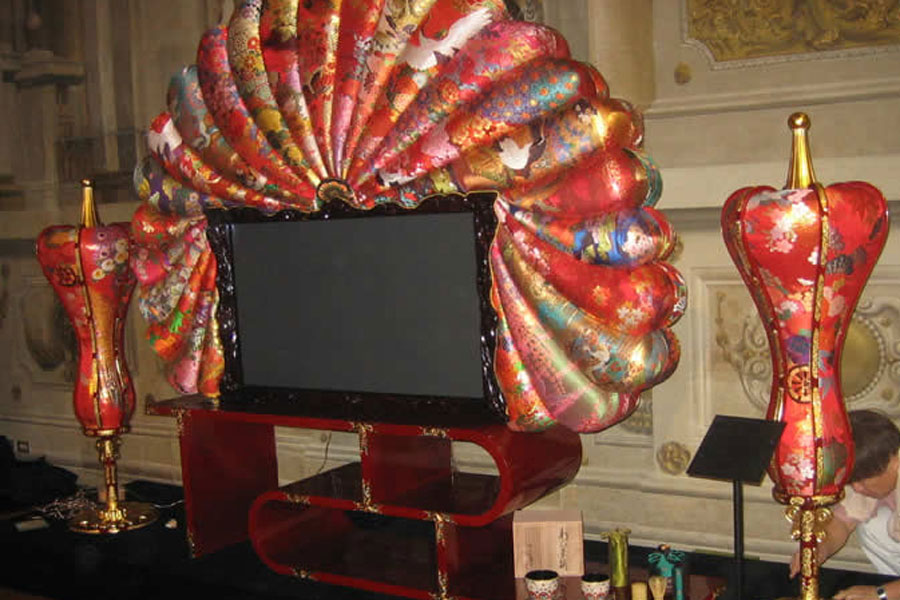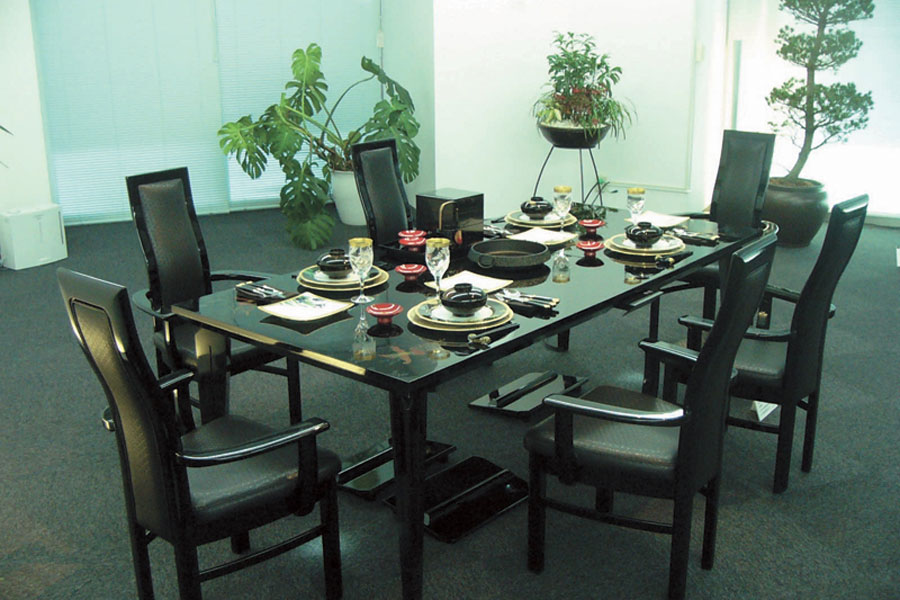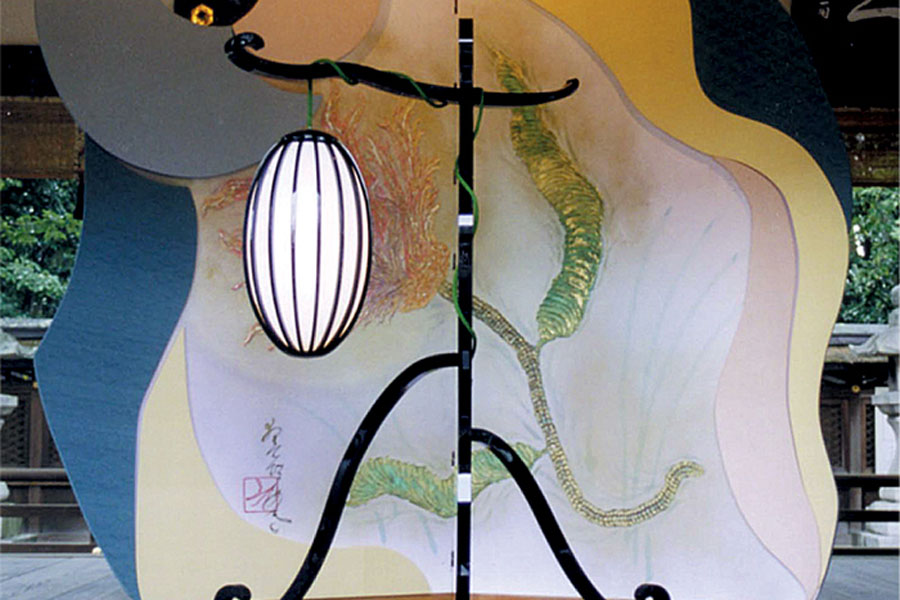Design Work by HIROAKI OMOTE
Watermark of lacquer
Watermarked by lacquer shows fineness and a subtle change in Japanese sensitivity as well as Japanese technique.
As if the back fabric of KIMONO, the watermark pattern shows inside nobility and affection.
It is a way of expression based on the unique sense of Japanese culture.
Watermark of woodcarving
Watermark of woodcarving is one of the best arts in a life of Japanese who have culturally overlapped wood and paper from old time.
Japanese lumber continues building shrine pavilions and Buddhist temples by being carved from material like zelkova.
Watermark of balustrade achieves the best art expression without losing the texture of material and massive feeling of design.
A technique of watermark is the best theory cultivated by Japanese who express fineness and discreet.
Japanese high level, traditional technique is a technique of watermark.
It is made with rice paper and wood. The wood part is made with a special technique by a traditional craftsman since it has to be cared for being moisturized and dried out.
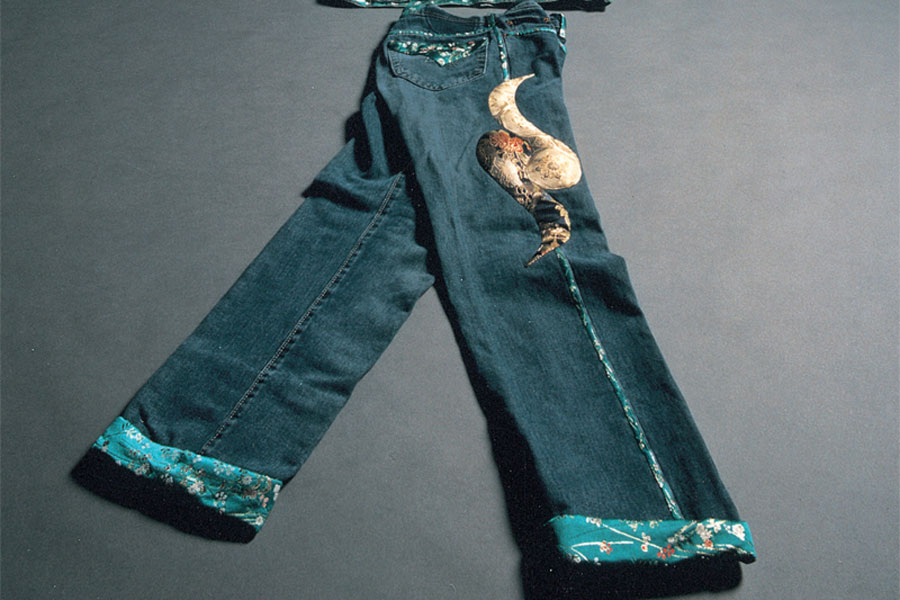
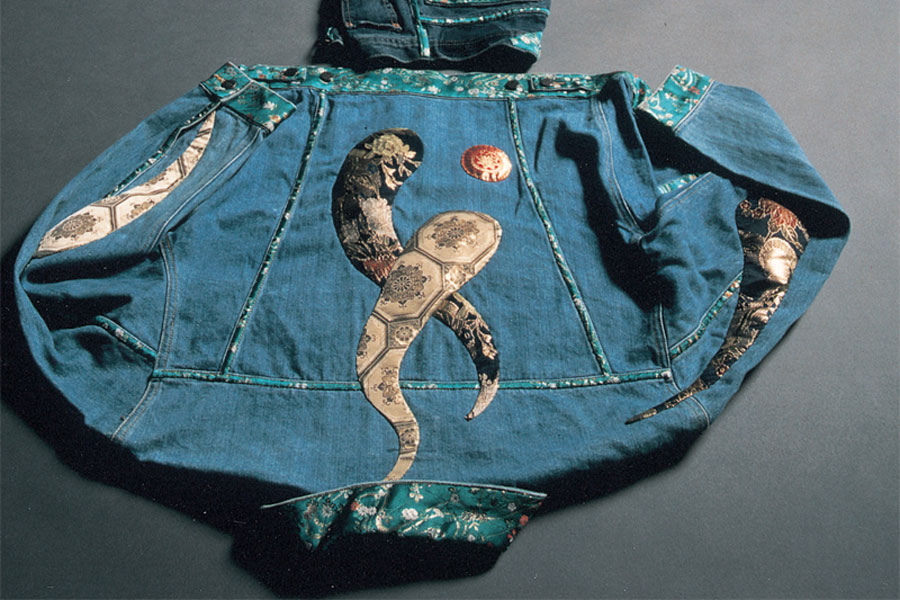
Jeans
In 1998, this was displayed on the exhibit aiming in recycling high class nishijin cloth. Omote’s idea is a collaboration of jeans and nishijin cloth.

KISSUI -Kamisashi-
This images ‘a form before becoming a form.’ Coated with green URUSHI, which is a special technique glittering like lame.
This was originally desined as a hairpin with a design concept ‘a form being a form.’ This beautiful form also works as interior design. Coated with URUSHI

TATEGUMO
This was made with leather and gold thread. There are six inner pockets. It took 10 years to complete this work to make it comfortable to use. This bag owns all delicacy, strength, and elegance. A part of gold thread can be customized.

KOUSHI
Put Kimono cloth upon cowhide. There are four inside pockets. It's very light and enough content with various size.
